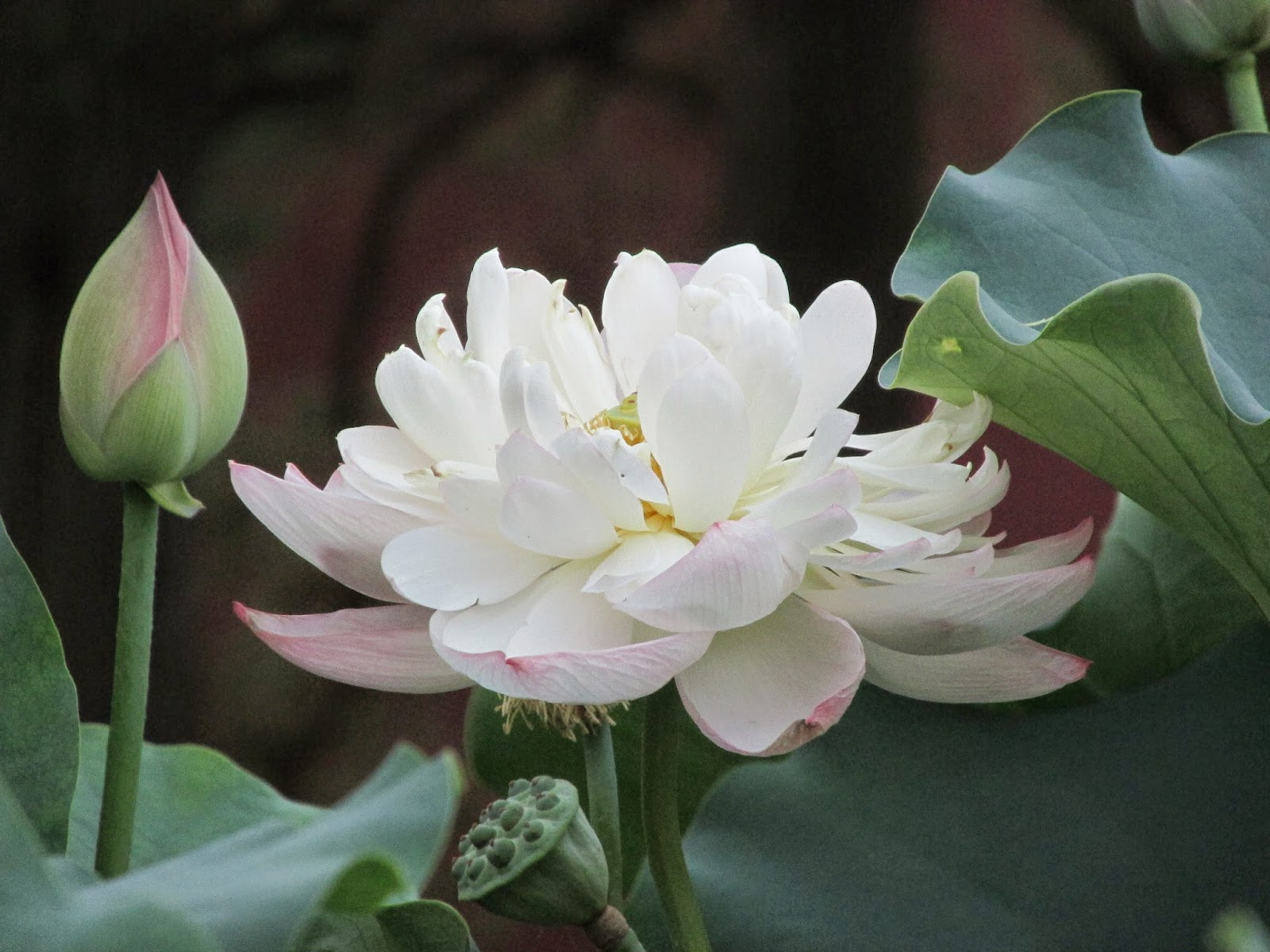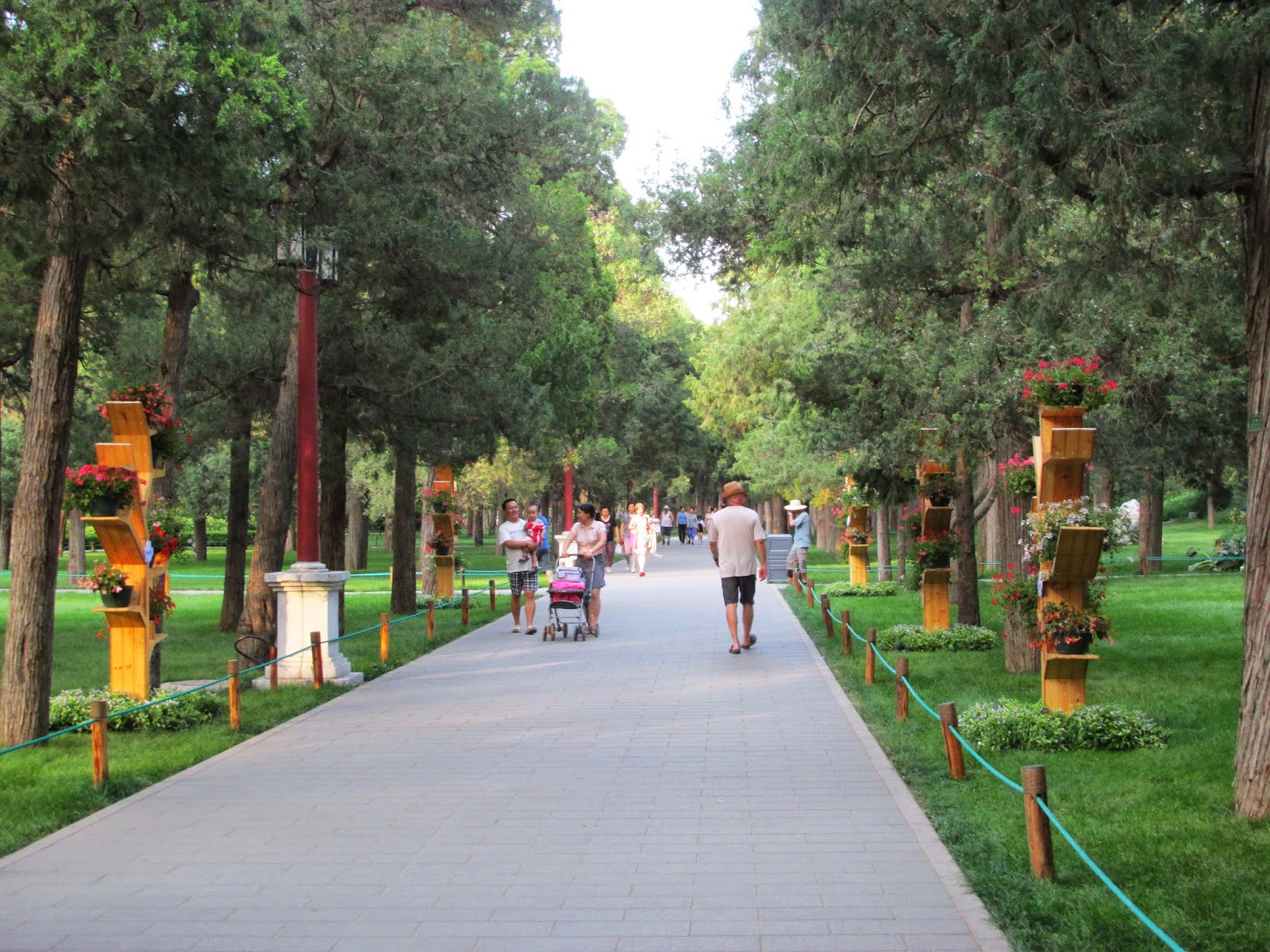Tuesday
was museum—Shaanxi History Museum—day, which was one of the things I really
wanted to do in Xi’an. The man at the hostel had suggested that I go on Tuesday
instead of Sunday because it would be very crowded on Sunday. Karen confirmed
this, as she had planned to go on Sunday until she saw the crowd waiting to go
in. I don’t know what Sunday was like, but when I arrived at 8:40 Tuesday
morning there was already a very long line. It could be that more people were
there because the museum is closed on Monday. Or there are just a lot of
tourists. It took two hours to get to the ticket office. Fortunately, I could
read on my phone while waiting. I also chatted a very little, which is how much
English they could speak, with a couple 15-year-old girls behind me. The line
was actually pretty well organized. Although it looked like an unorganized
mass, there were three separate lines that stayed in line.
The
museum is free to 4000 people every day. I wondered if they extended that
number for the summer crowds. Once inside, I immersed myself in museum world
for three hours. At the beginning it was extremely crowded, as everyone entered
at the same time and was in the same place. It was hard to get in to look at
the exhibits closely, and the line moved slowly because everyone was taking
lots of photos. However, after a while, the crowd dispersed and it was easier
to wander around.
I always enjoy the pottery
and bronze items.
And I especially
have always enjoyed Chinese figures.
There is an exhibit of terracotta warriors
that we could see close up.
Another exhibit I enjoyed is miniature people from
another tomb.
The museum has a special exhibit of Tang dynasty treasures that
included gold and silver items.
There is also a special exhibit of imitating
Tang dynasty murals in which paintings of artists’ imitations are displayed.
The museum has an exhibit of Tang dynasty murals, but the entrance fee is 300
RMB/$50. I wonder how many people actually pay that much to see the exhibit. I
think it was half price according to a sign, but that’s still a lot.
My
second destination of the day was the Big Wild Goose Pagoda, which is a half
hour walk from the museum. Since it was mid-afternoon and I hadn’t eaten much
all day, I stopped at First Noodles under the Sun, which is on the corner of
the park leading to the pagoda. The server turned the menu to the noodles page
and suggested three items for me. They were listed as “spilt the knife
noodles.” I’m not sure what that means, but they were freshly homemade and were
some of the best I’ve had.
Karen
had said she didn’t like this pagoda very much because the park area you walk
through to get to it is full of vendors. (She preferred the Small Wild Goose
Pagoda, which I didn’t get to, because the area was quiet.) There were stalls,
but they weren’t active yet, maybe because I was there in the mid-afternoon
heat. The pagoda wasn’t very crowded, either. The complex includes a number of
beautiful rooms with wall murals and Buddha images. The murals in one room are
covered with stone. Those in another room are carved wood.
I walked up the six
levels of the pagoda. Views were lovely.
Across
from the pagoda’s park is a new, very modern shopping mall. It features a huge
ceiling with a video of changing seasons and places. Many people stood watching
and photographing it.
My
third destination was the City Wall again. I walked back to the main street,
which took longer than I’d anticipated, and took the metro. The street I walked
along has a series of statues along the side of the road, between the car lanes
and the other vehicle lanes.
When I decided to revisit Xi’an, I knew I wanted
to ride a bicycle around the wall just because it’s possible to do it and I
like riding. It wouldn’t have been the end of the world if I hadn’t done that,
but, since it was on the way home and I felt pretty good, I decided to do it.
By the time I got there and rented a bicycle it was 8:00; so daylight was
fading and the lights were already on.
 I did the 14 km trip in an hour and 15
minutes. Since I’d seen the views on the first part with Karen on Monday, I
could ride past them. While the area outside the South Gate is pretty glitzy
with lots of fancy buildings, the rest of the wall goes though more residential
areas. It looked like a lot of regular—not fancy—apartment buildings. In some
places before it got dark, I could see lots of people enjoying the path around
the bottom of the wall—walking, sitting. I thoroughly enjoyed riding even
though it was dark most of the time with the only lights being the lighted lanterns
along the wall. At the North Gate, one entrepreneur was still open selling
drinks for high prices, knowing that there wasn’t anywhere else to purchase
them. It was good to see her, as I needed a drink. In the last section, there
was a group of women in a plaza at the bottom of the wall dancing with cloth
squares and umbrellas. It was fun to stop and watch them for a while. By the
time I walked back to the hostel, my body was tired, as I’d been out for 13
hours. I know I packed too much into the last day, but it felt OK when I did
it. Had I had more time, I would have saved the pagoda for another day and
rested in my room before doing the bicycle ride. But such is life when
traveling.
I did the 14 km trip in an hour and 15
minutes. Since I’d seen the views on the first part with Karen on Monday, I
could ride past them. While the area outside the South Gate is pretty glitzy
with lots of fancy buildings, the rest of the wall goes though more residential
areas. It looked like a lot of regular—not fancy—apartment buildings. In some
places before it got dark, I could see lots of people enjoying the path around
the bottom of the wall—walking, sitting. I thoroughly enjoyed riding even
though it was dark most of the time with the only lights being the lighted lanterns
along the wall. At the North Gate, one entrepreneur was still open selling
drinks for high prices, knowing that there wasn’t anywhere else to purchase
them. It was good to see her, as I needed a drink. In the last section, there
was a group of women in a plaza at the bottom of the wall dancing with cloth
squares and umbrellas. It was fun to stop and watch them for a while. By the
time I walked back to the hostel, my body was tired, as I’d been out for 13
hours. I know I packed too much into the last day, but it felt OK when I did
it. Had I had more time, I would have saved the pagoda for another day and
rested in my room before doing the bicycle ride. But such is life when
traveling.
I came
to Xi’an to do three things: the terracotta warriors, the museum, and the wall.
I did all three and also the Tomb of Jingdi. I like what I’ve seen of the city.
It’s quiet compared to Chengdu—less traffic and no honking—and it’s not as
crowded. The hostel is in a residential neighborhood, which is nice. Local
vendors sell food in the morning and evening. My favorite treat in Xi’an was a
slice of big cantaloupe on a stick. I bought one every night and ate some,
leaving most of it for breakfast. There are several local cafes that are also
used to having tourists. People are out walking and sitting in the evening. I
like being in residential areas.



































































